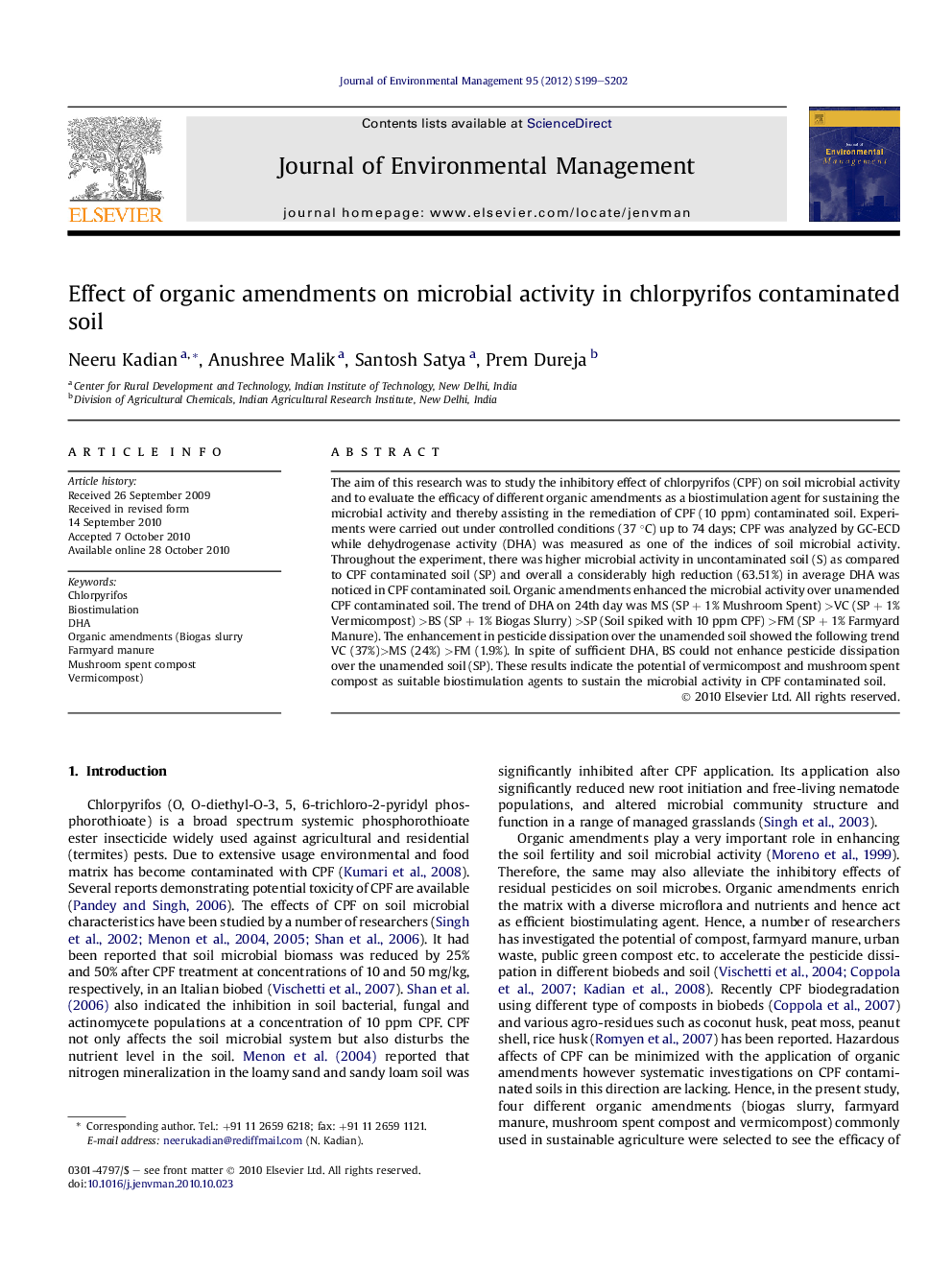| Article ID | Journal | Published Year | Pages | File Type |
|---|---|---|---|---|
| 1057053 | Journal of Environmental Management | 2012 | 4 Pages |
The aim of this research was to study the inhibitory effect of chlorpyrifos (CPF) on soil microbial activity and to evaluate the efficacy of different organic amendments as a biostimulation agent for sustaining the microbial activity and thereby assisting in the remediation of CPF (10 ppm) contaminated soil. Experiments were carried out under controlled conditions (37 °C) up to 74 days; CPF was analyzed by GC-ECD while dehydrogenase activity (DHA) was measured as one of the indices of soil microbial activity. Throughout the experiment, there was higher microbial activity in uncontaminated soil (S) as compared to CPF contaminated soil (SP) and overall a considerably high reduction (63.51%) in average DHA was noticed in CPF contaminated soil. Organic amendments enhanced the microbial activity over unamended CPF contaminated soil. The trend of DHA on 24th day was MS (SP + 1% Mushroom Spent) >VC (SP + 1% Vermicompost) >BS (SP + 1% Biogas Slurry) >SP (Soil spiked with 10 ppm CPF) >FM (SP + 1% Farmyard Manure). The enhancement in pesticide dissipation over the unamended soil showed the following trend VC (37%)>MS (24%) >FM (1.9%). In spite of sufficient DHA, BS could not enhance pesticide dissipation over the unamended soil (SP). These results indicate the potential of vermicompost and mushroom spent compost as suitable biostimulation agents to sustain the microbial activity in CPF contaminated soil.
